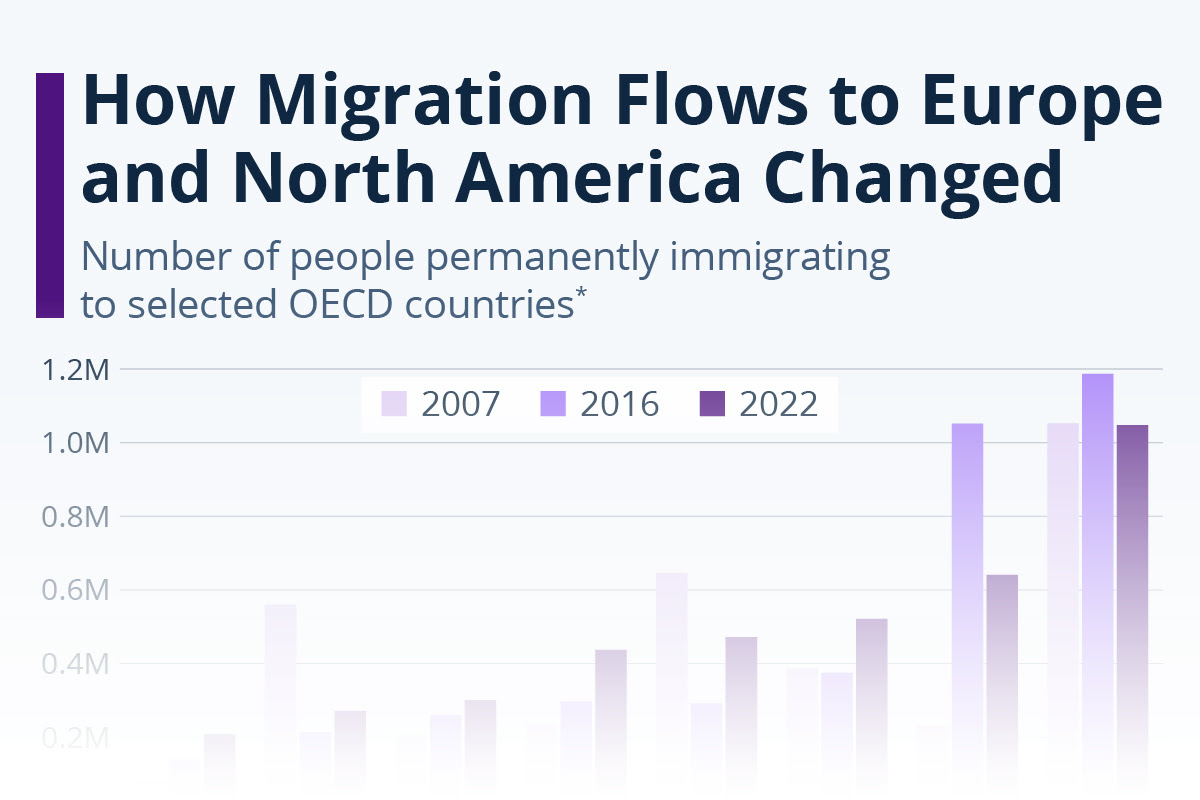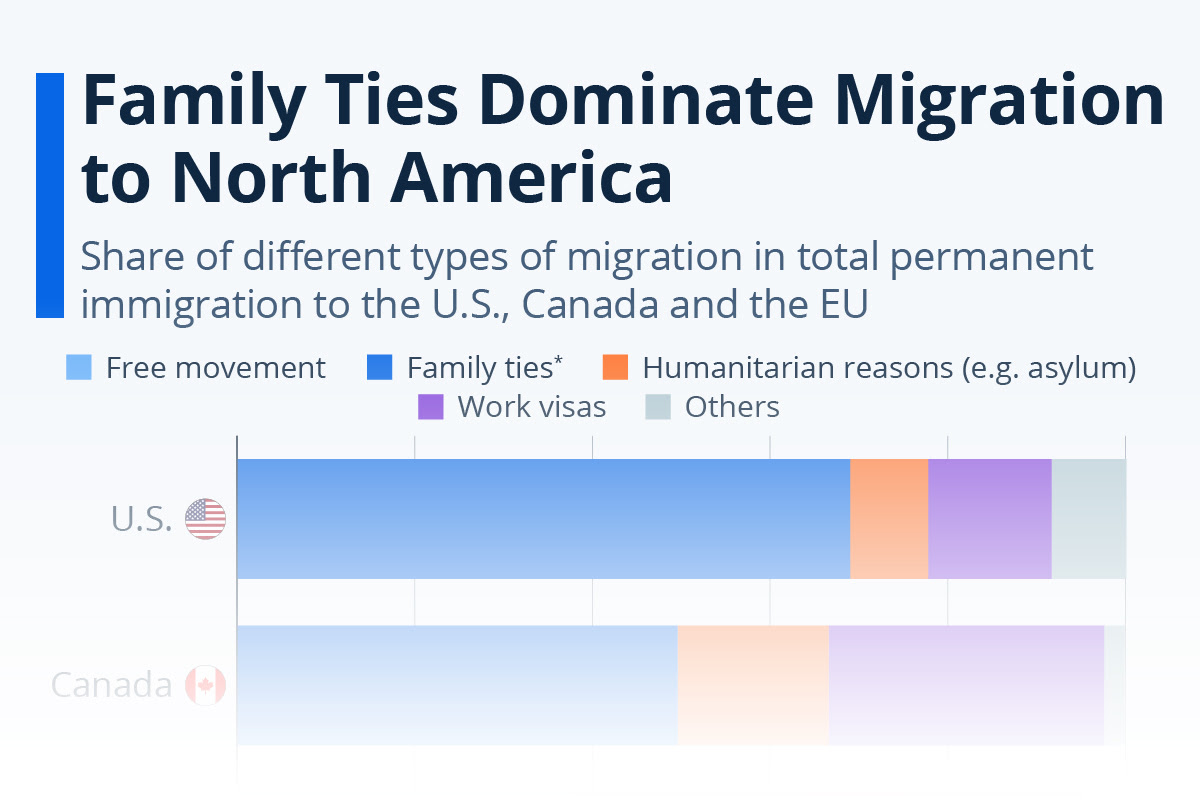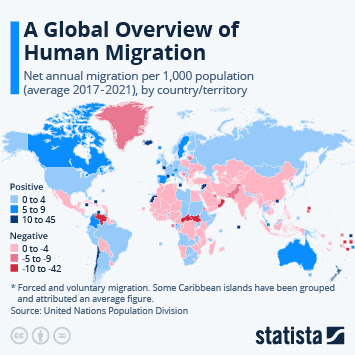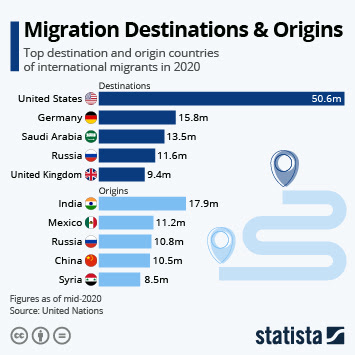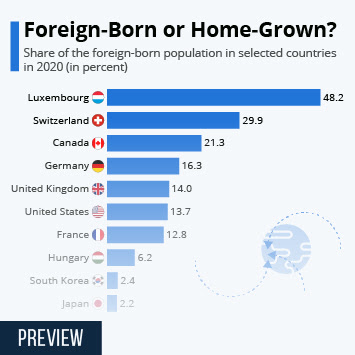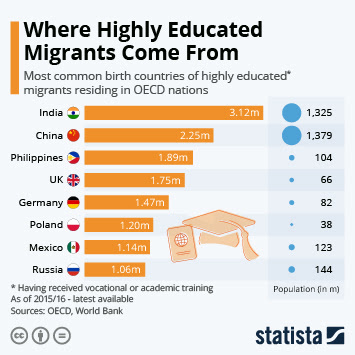Statista Daily Data – How Migration Flows to Europe and North America Changed
According to the newly released International Migration Outlook 2023, permanent migration to OECD countries reached a new high in 2022 at 6.1 million people. Many developed countries that are part of the group accepted the highest numbers of permanent immigrants since their OECD records started around 15 to 25 years ago, among them Canada, France, the Netherlands and the United Kingdom. Permanent immigration was dominated by those qualifying through family ties – an estimated 40 percent of all new immigrants across the OECD last year. In the U.S., this number was even higher at 69 percent.
In some countries across North America and Europe, however, past years surpass 2022 in permanent migration numbers. For Germany, the year in question is 2016, when the country accepted more than 1 million new immigrants – around 40 percent for humanitarian reasons – as the Syrian civil war raged. The U.S. has seen more stable immigration figures since OECD records started in 1996, with a high of 1.27 million reached in 2006. Spain and Italy saw their highest recorded permanent migration figures in 2007 after an earlier peak of arrivals across the Mediterranean and the Atlantic in 2006 and a simultaneous easing of immigration law in Italy.
The report concludes that the world is dealing with record high levels of displacement due to conflict, while many nations are simultaneously looking to fill labor shortages through skilled immigration. Canada saw elevated numbers of work visa holders and asylees among permanent immigrants, while in the U.S. and the EU, family ties and free movement laws qualified the majority of new immigrants. The humanitarian quota in the EU was only slightly above the OECD average of 11 percent last year. It stood at just 8.8 percent in the U.S.

